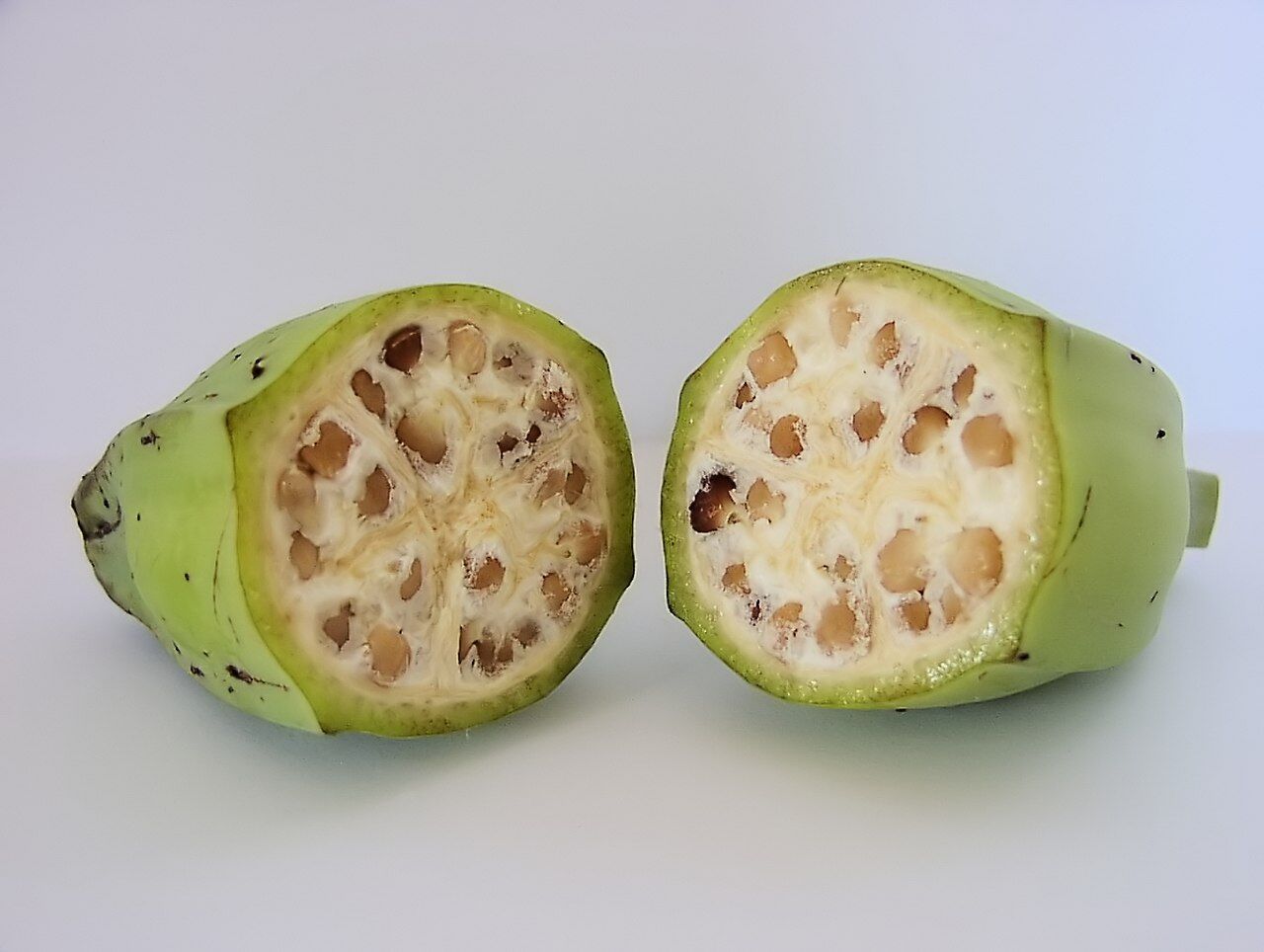Smooth, sweet and a nice texture to put your teeth in: we talk about bananas. We all eat them, and probably for both the reasons you can throw them in your bag minutes before colleges start, and they are easily to find in grocery stores, with your eyes barely opened. A plus is: they provide you with energy. And that is exactly the reason why the banana is so popular all around the world, among both food consumers and farmers.
They are affordable and nutritious, and ever interesting. Firstly, because of their shape and the way they fit in your hand and secondly of course because of the fascinating history. What do we know about the history of the banana? To begin this story, look at picture 1. This is de original banana, and as many will agree, this doesn’t look alike the state-of-the-art banana we know today. Genomic engineering made us evolve the banana to every consumers’ desire. Is this process flawless and let it to the banana being vulnerable to diseases?
What is a banana actually?
Bananas are fruits that grow on plants of the genus Musa and are particularly known for their presence in Papua New Guinea. However, when ages passed, the plant was introduced to a dozen of places and nowadays they grow in 135 countries, obviously primarily for edible purposes, and secondly for purposes of producing beer, fibre, banana wine and as decoration.
The king of the bananas
What determines a king from a prince? Well, the sustainability in a battle. And a battle happened! It was a lethal one, in which different banana species fought the very dangerous fungus Fusarium oxysporum. This pathogen (also known as the Panama disease) was especially effective against some types of bananas and therefore it caused some victims. Among them was the quite familiar (and state-of-the-art banana ‘The Gros Michel Banana’). This Gros Michel Banana was also known as the ‘Big Mike’ and was until 1950’s the banana we used to eat and buy in grocery stores. Especially because they were densely packed (and therefore contained a lot of nutrients in a small volume) and for that reason they were easily transported across the world, also for the structure of their bunches. Unluckily, they were an easy victim for the Panama disease and therefore went extinct.
When we speak about survival of the fittest, this Panama disease is a great example. Because there was a fit one: and it was the Cavendish banana, the banana that we all know today and classify as ‘banana’ if we speak about ‘bananas’. We know them for their (quite) big size, being yellow as the sun, and having that classic banana shape.
These Cavendish bananas, introduced by William Cavendish, the sixth duke of Devonshire, seemed to be immune to the terrors of the Fusarium oxysporum. Strangely enough, this is only the case in subtropical environments. So, in those situations the Cavendish banana is immune. However, in tropical situations they are still prone to its dangers. Needless to say: for that reason the Cavendish banana mainly grows in subtropical areas, such a South America, China, Australia and Southern Europe.
Black page in the chronicles
All fairy tales have their black pages, and for that reason the story of the Cavendish banana is starting to look like one. The apple is the sweetest at its peak hours. And it is that exact point the Cavendish banana is at this very moment. Because now the dangerous Panama disease is peaking around the corner. Remembering, we all know that the bananas are from the same genus (Musa), and we know fungi also ‘live’ by the rule of survival of the fittest. Unhappily, they found a way to infect the Cavendish banana. And for that reason it is thought the Cavendish banana would extinct in 10 to 20 years, mainly because the Cavendish banana lacks genomic diversity and being genomic wisely very similar to the genome of the ‘Big Mike’. And we all know what happened to ‘Big Mike’.
Their perfect skin and lacking of genomic variation could be the cause of its own extinction. Like all species, the Fusarium oxysporum, needs to survive, and with the ‘Big Mike’ not being there, the Cavendish is the second sweetest target. Being placed around the world, the Cavendish banana is vulnerable to that fungus, being exposed to that pathogen all around the globe. With that in mind, let’s hope the Cavendish banana will not meet the same fate as its predecessor, the ‘Big Mike’.



